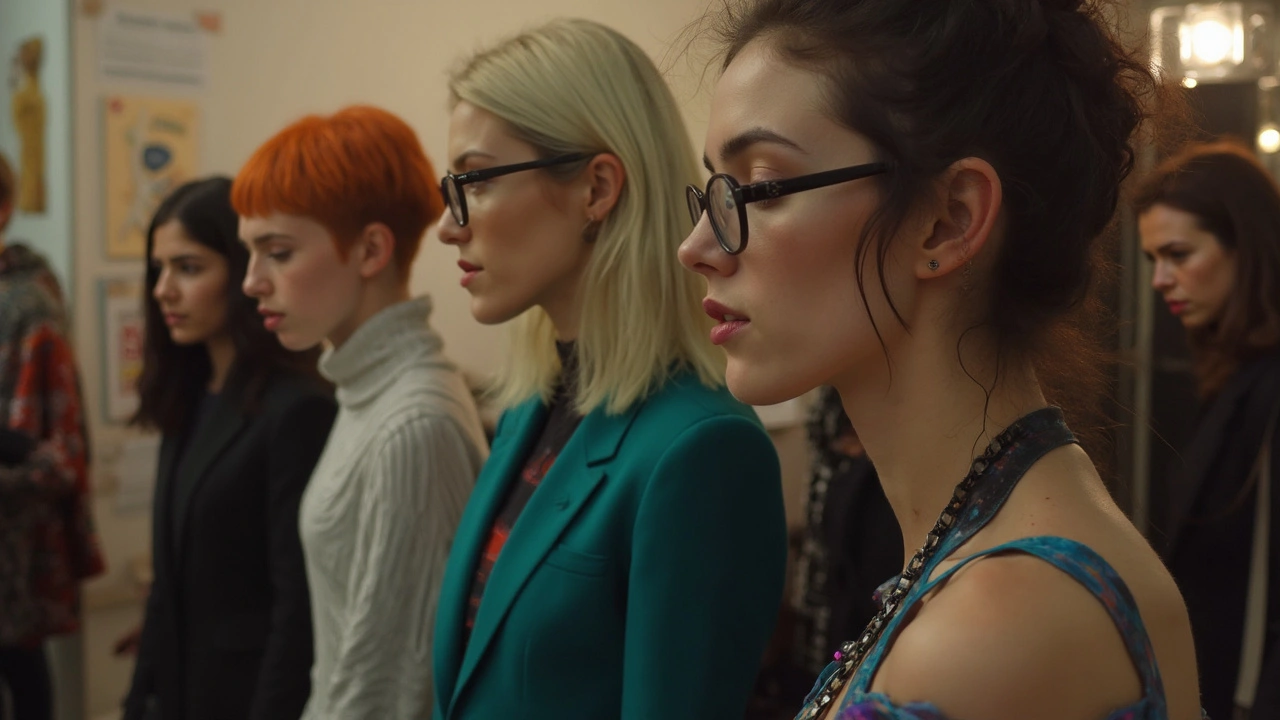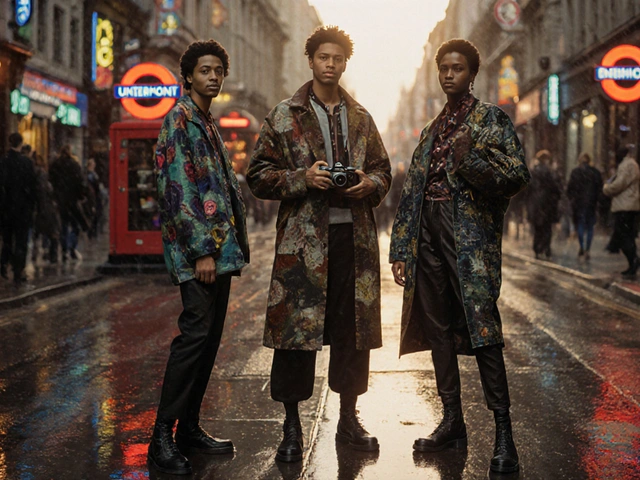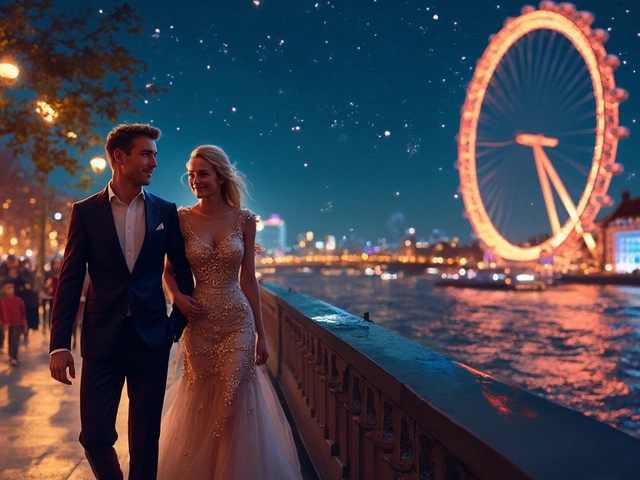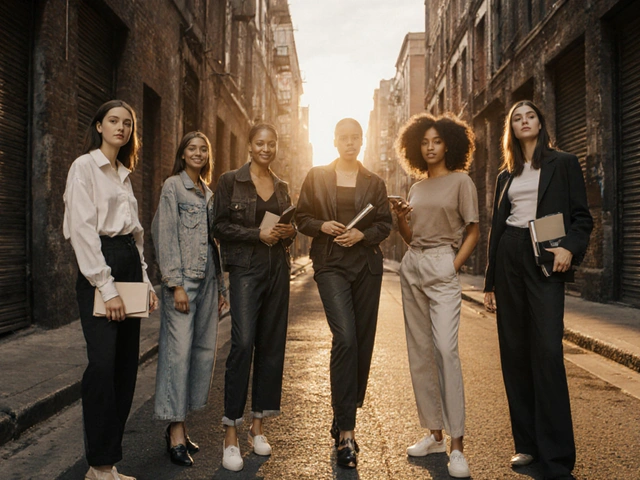Forget the old-school idea that models just need to fit a certain mold. These days, agencies and brands are searching for looks that grab attention and stick in people’s minds. The magic word? Signature. If you want to become a model, figuring out what makes you unique matters way more than simply chasing trends or blending in.
Start with a real self-check. What makes your face, stance, or vibe different from everyone else? Maybe it’s your freckles, unconventional smile, or the way your hair falls — all these quirks can actually be your biggest strengths. Think about your style, too. Do you love bold colors, simple classics, or sporty streetwear? The point is to celebrate what makes you feel most like you — because confidence is impossible to fake in pictures.
It might feel weird at first to focus on yourself, but this is the foundation every pro model builds on. Agencies don’t just want pretty; they want personality. If you can walk into a casting and show what makes you unforgettable, you’ve already won half the battle.
- Understanding What a Signature Look Means
- Analyzing the Icons: Real Examples
- Finding Inspiration Without Copying
- Fine-Tuning Your Style for Agencies
- Common Pitfalls and How to Dodge Them
- Building Confidence in Your Look
Understanding What a Signature Look Means
So, what’s a signature look, really? It’s the thing that makes you pop out in a sea of faces. For models, it’s not about being the most conventionally attractive person in the room. It's about having a vibe, a style, or even a feature that’s memorable. Naomi Campbell is known for her fierce runway walk and sharp, defined cheekbones. Adut Akech has her shaved head and powerful stare. These signatures help them get recognized in an industry full of hopefuls.
Your signature can be anything—a gap in your teeth, your afro, freckles, a bold brow, or just how you dress outside of work. Agencies say they remember people who “light up the room” even during castings. According to IMG Models, they get thousands of submissions each month, but only about 1-2% stick out because of their unique look.
- Physical features (like hair, skin, eyes, or body type)
- Personal style (how you dress, use accessories, or do your makeup)
- Presence (how you walk, stand, or even laugh)
The real secret? Focus on your standout quality instead of hiding it. Models like Slick Woods became brand icons because of their signature gap-toothed smile. That thing you worried might be ‘weird’ is probably your ticket in.
Here’s a quick snapshot from a modeling agency about what gets noticed most often:
| Feature | % of Agency Scouts Noticing It |
|---|---|
| Unique Facial Feature | 46% |
| Personal Style | 28% |
| Quirky Personality | 15% |
| Classic Beauty | 11% |
If you want to know how to become a model today, it’s about more than looking ‘pretty’ or fitting into the latest trend. It’s about figuring out what makes you impossible to forget and putting that front and center.
Analyzing the Icons: Real Examples
Want proof that owning your quirks pays off in the world of modeling? Just look at the biggest icons in the business. Most didn’t get famous for fitting a mold — they did it by turning what made them different into their brand.
Take Kate Moss, for example. In the early ‘90s, when supermodels all looked tall and glamorous, Moss came in at 5’7” with a waifish frame and an edgy vibe. That difference made her a legend. Then there’s Tyra Banks, who worked her athletic build and energy, pushing for more diversity in modeling. Alek Wek was told her dark skin and short hair weren’t “marketable.” Now she’s known as one of the most influential African models ever.
If you scroll through current campaigns, you’ll spot folks like Slick Woods, famous for her gap-toothed smile and shaved head, or Adwoa Aboah, who’s booked high-fashion work around her shaved scalp and freckles. The thing all these stars have in common? They doubled down on what other people said was odd, and agencies noticed.
Here’s how their signatures helped them break through:
- How to become a model? Study what made others stand out. Don’t copy, but get inspired by how they made their unique traits work for them.
- Make a list of your standout features — seriously, grab a notebook or your phone and write them down.
- Look at old campaigns on Instagram, Pinterest, or Vogue, and note who you remember and why.
- Think beyond the face: a signature walk, posture, or even the way you style your hair can set you apart.
To give you real numbers, here’s a quick look at how some unique models broke through, despite not fitting the norm:
| Model | Main "Signature" | Major Breakout |
|---|---|---|
| Kate Moss | Petite, edgy vibe | Calvin Klein Obsession campaign, early 1990s |
| Alek Wek | Dark skin, shaved head | Cover of Elle, 1997 |
| Slick Woods | Gap teeth, shaved head | Fenty Beauty campaigns, 2017 |
| Winnie Harlow | Vitiligo skin condition | America’s Next Top Model, 2014 |
This isn’t about collecting “flaws.” It’s about seeing what makes you memorable and confident, and not hiding it. Agencies are often bored of generic looks — the world changes, and so do standards. If you bring something fresh to the table, you’re way more likely to get noticed in 2025.
Finding Inspiration Without Copying
Scrolling through Instagram or flipping through Vogue, it’s tempting to just copy what you see from big-name models. But agencies can spot a copycat a mile away. The real challenge is using those influences to shape your own vibe, not just becoming a carbon copy of someone else. You want to turn inspiration into something that actually reflects you.
Start by looking at specific models who have thrived for their signature looks, not just their faces. Cara Delevingne’s bold eyebrows made her a standout when thin brows ruled. Adwoa Aboah rocks shaved hair and freckles—she broke through simply because she leaned into her natural features. Joan Smalls mixes edgy with classic, and she owns it on and off the runway. These models prove you can find your lane by watching how others did it their way instead of just following trends.
A good way to figure out your style is to create a mood board. Collect photos, colors, fashion pieces, maybe even quotes that grab you. Don’t limit yourself to just fashion—include art, movie scenes, or anything that lights a spark. Then, take a step back and look for patterns. You’ll probably see themes that match your personality, not just what’s hot right now.
Trying new trends is fine, but never force yourself into something just because it’s everywhere. The most memorable models adapt trends to fit who they are—not the other way around. When you test out a new style and it feels awkward, ditch it. There’s no point chasing a look that doesn’t make you feel like yourself.
- Follow a mix of models, stylists, and photographers with different aesthetics—not just the most popular ones.
- Notice the details you’re drawn to, like a certain haircut, jewelry, or makeup. Ask yourself why you like it, and if it works for your regular style.
- Document your personal experiments with selfies or even a private Instagram. Sometimes you spot your signature look by seeing what feels natural in photos.
Remember, the goal in how to become a model is to show you’re more than a copy of what’s already out there. When inspiration helps you turn up your own personality, you’ll stand out for the right reasons.

Fine-Tuning Your Style for Agencies
If you want to catch a modeling agent’s eye, you’ve got to make your style work for you—not against you. Agencies want fresh faces, sure, but they’re also scouting for someone who shows up looking put together and true to themselves. Before you walk into a casting or send out your portfolio, it’s time for a reality check. Are you showing the best version of your own look, or are you just copying someone else?
Most agencies will ask for simple, clean photos—no heavy makeup, fake eyelashes, or wild filters. Keep your hair natural and wear fitted clothes in neutral colors. This lets them see your real features and how you could fit different jobs. Trust me, jeans and a plain tee work better than any glittery outfit. If you’re all about standing out, use accessories or a signature hairstyle to give a hint of your vibe without going overboard.
Here’s what most top agencies want to see right away:
- A strong natural headshot (good lighting, no hat, no sunglasses)
- A full-body shot (front and profile)
- Simple fitted clothes (black jeans, tank tops, or basic tees)
- Clear, unedited photos—ditch the heavy edits and dramatic filters
It’s also smart to research what each agency likes. For example, Elite and IMG have strict instructions for digitals—sometimes they’ll even say, ‘No makeup, hair down, hair up, smile’ or 'Profile shot required.' Following the rules shows you can take direction and pay attention. Never send in swimsuit shots unless they ask for them, by the way—that’s a red flag for real agents.
Check out this quick table for what the biggest agencies expect in a first impression:
| Agency | Photo Style | Dress Code | Submission Must-Have |
|---|---|---|---|
| IMG Models | Unfiltered, bright natural light | Simple, body-hugging clothes | Front, profile, and close-up shots |
| Elite Model Management | No makeup, neutral background | White/black tee, jeans | Natural hair, minimal jewelry |
| Ford Models | Classic style, clear image | Fitted tank, pants or shorts | Different angles, at least one smile pic |
To recap: be yourself, but polish it up. The best way to start your journey in how to become a model is by being real, reliable, and ready to listen. Agencies remember people who keep it authentic, follow directions, and make it easy for them to see your potential. Don’t overthink; just show your cleanest, most natural self—and let the rest speak for itself.
Common Pitfalls and How to Dodge Them
Breaking into modeling sounds glamorous, but there are some stumbling blocks nearly everyone hits early on. Knowing what those are can save you a ton of time—and maybe some heartbreak.
One big mistake? Chasing every trend or copying other models. Sure, it's fine to take inspiration, but agencies can spot a copycat in seconds. They want to see how to become a model with a fresh look, not a carbon copy of someone already on their roster. Another myth to ditch: thinking you need pro photos right away. A set of clean, clear polaroids in natural light will get you further with agencies than photo shoots with heavy editing or wild filters.
Let’s talk about scams, because they’re everywhere. You should never pay upfront for agency representation or "exclusive" workshops—that’s a red flag. Real agencies make their money by getting you paid work, not charging high sign-up fees. The table below points out some of the most common scams to watch for and what’s legit:
| Red Flag | What’s Legit |
|---|---|
| Upfront fees for representation | Agencies earn commission after you get jobs |
| Promises of guaranteed jobs or fame | No legit agency can guarantee bookings |
| High-cost mandatory photoshoots | Professional shots are optional, basics work early on |
Overediting or overstyling is another pitfall. Heavy makeup, retouching apps, or wild hair changes just make it harder for agencies to see the real you. If they can't picture your natural look on a client’s campaign, they're less likely to bring you in. Keep it simple so your real features stand out.
Nerves and lack of self-belief can trip you up, too. Everyone gets a little anxious walking into a casting, but if you start to act like you don’t deserve a spot, it’ll come through. Practice good posture, eye contact, and speaking about yourself in a straightforward, upbeat way.
- Skip paying shady “model schools” or sketchy influencers—look up agency reviews and always read the fine print.
- Don’t hide your personality—models with quirks and confidence get booked the most.
- Keep your look clean, natural, and simple in your first photos; agencies care more about seeing you than about big production.
- If you get rejected, don’t take it personally. Rejection is the most common part of modeling, not a sign to quit.
Building Confidence in Your Look
If you’re serious about a modeling career, your confidence will either open doors or quietly lock you out. Real talk: even Gigi Hadid admits to struggling with nerves before shoots. That means everyone in the industry, from newcomers to supermodels, has worked on their confidence, not just their posing.
So, how do you build up that rock-solid sense of self? It starts by owning your quirks. Models who last in the game know that their so-called “flaws” – a gap in their teeth, a distinct nose, wild curls – are what get clients calling. According to a 2023 report by Models.com, 65% of new bookings in major cities like Paris and New York went to faces that didn’t fit the old beauty blueprint. Agencies are hungry for looks that breakthe rules, not blend in.
You can boost your confidence in a few proven ways:
- Practice in front of a mirror. This sounds basic, but it works. Try out different smiles, angles, and expressions. See what feels powerful – not forced.
- Gather honest feedback. Trusted friends or mentors might notice cool traits you’re missing. Don’t just fish for compliments; ask what stands out or feels authentic.
- Repeat positive self-talk. Sounds cheesy, but saying “I look unique” or “I bring something new” out loud chips away at self-doubt.
- Take lots of photos. Give yourself permission to pull weird faces, try odd lighting, or dress up unexpectedly. Scroll back and pick out shots that scream ‘you’.
- Remember the stats. Look at numbers about what gets booked and realize that confidence really does count. Comparison hurts, but facts help.
If you like tracking your progress, jot notes about how you feel after each shoot or casting. Some days will be rough. Don’t freak out if you get rejected — nearly every famous model has heard “no” way more than “yes.”
| Year | Percent of Agencies Seeking Unique Looks | Percent of Traditional Beauty Pref. |
|---|---|---|
| 2018 | 48% | 52% |
| 2021 | 57% | 43% |
| 2024 | 68% | 32% |
This shift tells you not to shy away from what makes you different. Instead, show up as yourself — loud, confident, and ready to make an impact. Getting noticed for your how to become a model story starts when you walk in believing you’re already enough.







